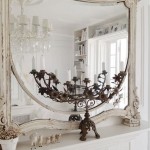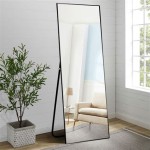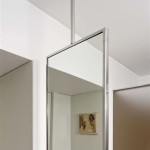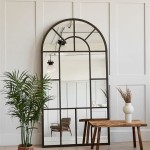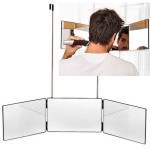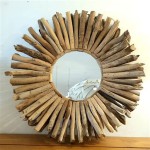Adhesive for Mirrors on Wood
Attaching a mirror to a wooden surface requires careful consideration of the adhesive used. The wrong choice can lead to damage to both the mirror and the wood, or even the mirror falling, presenting a safety hazard. This article explores the different types of adhesives suitable for this purpose, their properties, and application methods.
Key Considerations When Choosing an Adhesive
- Mirror Size and Weight: Heavier and larger mirrors require stronger adhesives with higher weight-bearing capacities.
- Wood Type: Different wood types have varying porosities and surface textures which influence adhesive compatibility.
- Environmental Factors: Consider temperature fluctuations, humidity, and potential exposure to moisture when selecting an adhesive.
- Permanency: Determine if the mirror installation is permanent or if future removal might be necessary.
- Application Method: Some adhesives are easier to apply than others and require specific tools or techniques.
Selecting the right adhesive is crucial for achieving a secure and long-lasting bond. The following adhesive types represent the most common and effective options for adhering mirrors to wood:
Suitable Adhesive Types for Mirrors on Wood
- Mirror Mastic: A specialized adhesive designed specifically for mirror installations. It offers excellent adhesion to both glass and wood, providing a strong, permanent bond. Mirror mastic often comes in a neutral cure formulation, preventing damage to the mirror's silvering. It's also typically resistant to moisture and temperature changes.
- Construction Adhesive: This category encompasses various adhesive formulations, including heavy-duty options ideal for larger, heavier mirrors. Look for varieties specifically labeled as suitable for glass and wood applications. Some construction adhesives require extended curing times.
- Silicone Adhesive: Certain silicone adhesives are formulated for mirror mounting, providing a strong and flexible bond. They are often waterproof and can accommodate slight movements or vibrations. Choose a neutral-cure silicone to prevent mirror damage.
- Double-Sided Mounting Tape: For lighter mirrors, double-sided mounting tape designed for mirrors can be a viable option. This method is less permanent than liquid adhesives but offers a quick and easy installation process. Ensure the tape is specifically designed for mirror mounting and has sufficient weight-bearing capacity.
Proper surface preparation is essential for successful adhesion regardless of the chosen adhesive. Inadequate preparation can lead to weak bonds and potential mirror failure.
Preparing the Wood Surface for Mirror Adhesion
- Cleaning: Thoroughly clean the wood surface using a suitable cleaner to remove dust, dirt, grease, or any previous finishes. Allow the surface to dry completely.
- Sanding: Lightly sand the wood surface with fine-grit sandpaper to create a slightly roughened texture for better adhesion. Remove any sanding dust.
- Priming (Optional): Depending on the wood type and adhesive, applying a primer can improve adhesion and seal the wood surface. Consult the adhesive manufacturer’s recommendations for primer compatibility.
Applying the adhesive correctly is as important as selecting the appropriate type. Follow these guidelines for optimal results:
Applying the Adhesive and Mounting the Mirror
- Following Instructions: Carefully read and follow the manufacturer's instructions for the specific adhesive being used. These instructions will provide specific details on application methods, curing times, and safety precautions.
- Even Distribution: For liquid adhesives, apply the adhesive in an even pattern across the back of the mirror or the wood surface, following the manufacturer’s recommendations. Avoid applying excessive adhesive, which can squeeze out and create a mess.
- Supporting the Mirror: While the adhesive cures, support the mirror securely in place. Use temporary supports or bracing to maintain the desired position and prevent slippage.
- Curing Time: Allow the adhesive to cure completely according to the manufacturer’s instructions before removing any supports. Disturbing the mirror before the adhesive has fully cured can weaken the bond.
Safety should always be a top priority when working with adhesives and mirrors. Take the necessary precautions to protect yourself and ensure a safe installation.
Safety Precautions
- Ventilation: Work in a well-ventilated area to avoid inhaling fumes from adhesives. Some adhesives require the use of a respirator.
- Eye Protection: Wear safety glasses to protect your eyes from splashes or debris.
- Gloves: Wear gloves to protect your skin from contact with adhesives.
- Handling Mirrors: Large mirrors can be heavy and awkward to handle. Use appropriate lifting techniques and seek assistance if needed.
- Disposal: Dispose of adhesive packaging and any unused adhesive according to local regulations.
Choosing and applying the correct adhesive for mounting a mirror on wood requires careful consideration. By following proper procedures and safety precautions, a secure and long-lasting installation can be achieved.

How To Frame A Mirror With Clips Glue The Wall
Mirror Adhesive Adiseal Strong Glue For
What Is The Best To Use Glue Mirrors A Wall Quora

Evo Stik Solvent Free Light Grey Mirror Adhesive 290ml Diy At B Q

Mirror Fix Sil 300ml Silicone Adhesive And Sealant For Mirrors Factory

How To Use Mirror Adhesive Silicone

Mirror Silicone Sealant Diy Bostik

Diy Driftwood Mirror Step By Tutorial Bird

Mirror Silicone Sealant Diy Bostik

Mirror Fix 100 Adhesive Manufacturers


